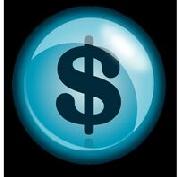
 |
|
| Financial Terms | |
| Dividend |
|
Information about financial, finance, business, accounting, payroll, inventory, investment, money, inventory control, stock trading, financial advisor, tax advisor, credit.
Main Page: business, payroll, stock trading, tax advisor, credit, accounting, financial, inventory control, |
Definition of Dividend
DividendA dividend is a portion of a company's profit paid to common and preferred shareholders. A stock DividendA payment a company makes to stockholders. Earnings before income tax. The profit a company made DividendThe payment of after-tax profits to shareholders as their share of the profits of the business for an accounting period. DividendA payment made to shareholders that is proportional to the number of shares dividendPeriodic cash distribution from the firm to its shareholders. DividendAs the term dividend relates to a corporation's earnings, a dividend is an amount paid per share from a corporation's after tax profits. Depending on the type of share, it may or may not have the right to earn any dividends and corporations may reduce or even suspend dividend payments if they are not doing well. Some dividends are paid in the form of additional shares of the corporation. dividends paid by Canadian corporations qualify for the dividend tax credit and are taxed at lower rates than other income. DividendUnlike dividends which are paid to company shareholders, participating insurance policy dividends are not based on the company's overall profits. Rather, they are determined by grouping policies by type and country of issue and looking at how each class contributes to the company's earnings and surplus.
Related Terms:Cash dividendA dividend paid in cash to a company's shareholders. The amount is normally based on  Cum dividendWith dividend. Cumulative dividend featureA requirement that any missed preferred or preference stock dividends be paid Discounted dividend model (DDM)A formula to estimate the intrinsic value of a firm by figuring the Dividend clawbackWith respect to a project financing, an arrangement under which the sponsors of a project Dividend clienteleA group of shareholders who prefer that the firm follow a particular dividend policy. For Dividend discount model (DDM)A model for valuing the common stock of a company, based on the Dividend growth modelA model wherein dividends are assumed to be at a constant rate in perpetuity. Dividend limitationA bond covenant that restricts in some way the firm's ability to pay cash dividends. Dividend payout ratioPercentage of earnings paid out as dividends.  Dividends per shareAmount of cash paid to shareholders expressed as dollars per share. Dividend policyAn established guide for the firm to determine the amount of money it will pay as dividends. Dividend rateThe fixed or floating rate paid on preferred stock based on par value. Dividend reinvestment plan (DRP)Automatic reinvestment of shareholder dividends in more shares of a Dividend rightsA shareholders' rights to receive per-share dividends identical to those other shareholders receive. Dividend yield (Funds)Indicated yield represents return on a share of a mutual fund held over the past 12 Dividend yield (Stocks)Indicated yield represents annual dividends divided by current stock price. Dividends per sharedividends paid for the past 12 months divided by the number of common shares Extra or special dividendsA dividend that is paid in addition to a firm's "regular" quarterly dividend. Ex-dividendThis literally means "without dividend." The buyer of shares when they are quoted ex-dividend Ex-dividend dateThe first day of trading when the seller, rather than the buyer, of a stock will be entitled to Homemade dividendSale of some shares of stock to get cash that would be similar to receiving a cash dividend. Indicated dividendTotal amount of dividends that would be paid on a share of stock over the next 12 months Liquidating dividendPayment by a firm to its owners from capital rather than from earnings. Perfect market view (of dividend policy)Analysis of a decision on dividend policy, in a perfect capital Residual dividend approachAn approach that suggests that a firm pay dividends if and only if acceptable Signaling view (on dividend policy)The argument that dividend changes are important signals to investors Special dividendAlso referred to as an extra dividend. dividend that is unlikely to be repeated. Stock dividendPayment of a corporate dividend in the form of stock rather than cash. The stock dividend Tax differential view ( of dividend policy)The view that shareholders prefer capital gains over dividends, Traditional view (of dividend policy)An argument that "within reason," investors prefer large dividends to With dividendPurchase of shares in which the buyer is entitled to the forthcoming dividend. Related: exdividend. Dividend incomeIncome that a company receives in the form of dividends on stock in other companies that it holds. DividendsAmounts paid to the owners of a company that represent a share of the income of the company. dividend payout ratioComputed by dividing cash dividends for the year dividend yield ratioCash dividends paid by a business over the most dividend growth methoda method of computing the cost cash dividendPayment of cash by the firm to its shareholders. constant-growth dividend discount modelVersion of the dividend discount model in which dividends grow at a constant rate. dividend discount modelComputation of today’s stock price which states that share value equals the present value of all expected future dividends. dividend payout ratioPercentage of earnings paid out as dividends. ex-dividend dateDate that determines whether a stockholder is entitled to a dividend payment; anyone holding stock before this date is entitled to a dividend. information content of dividendsdividend increases send good news about cash flow and earnings. dividend cuts send bad news. MM dividend-irrelevance propositionTheory that under ideal conditions, the value of the firm is unaffected by dividend policy. stock dividendDistribution of additional shares to a firm’s stockholders. DividendsProfits paid out to shareholders by a corporation. Preferred Stock Stock that has a claim on assets and dividends of a corporation that are priorto that of common stock. Preferred stock typically does not carry the right to vote. Dividend PolicyThis policy governs Canada Life's actions regarding distribution of dividends to policyholders. It's goal is to achieve a dividend distribution that is equitable and timely, and which gives full recognition of the need to ensure the ongoing solidity of the company. It also specifies that distribution to individual policyholders must be equitable between dividend classes and policyholder generations, and among policyholders within any class. AsymmetryA lack of equivalence between two things, such as the unequal tax treatment of interest expense Attribute biasThe tendency of stocks preferred by the dividend discount model to share certain equity Auction rate preferred stock (ARPS)Floating rate preferred stock, the dividend on which is adjusted every Cash cowA company that pays out all earnings per share to stockholders as dividends. Or, a company or Cash flowIn investments, it represents earnings before depreciation , amortization and non-cash charges. Cash flow coverage ratioThe number of times that financial obligations (for interest, principal payments, Cash flow per common shareCash flow from operations minus preferred stock dividends, divided by the Common stockThese are securities that represent equity ownership in a company. Common shares let an Conflict between bondholders and stockholdersThese two groups may have interests in a corporation that Constant-growth modelAlso called the Gordon-Shapiro model, an application of the dividend discount Contract monthThe month in which futures contracts may be satisfied by making or accepting a delivery. Cumulative preferred stockPreferred stock whose dividends accrue, should the issuer not make timely Date of paymentDate dividend checks are mailed. Date of recordDate on which holders of record in a firm's stock ledger are designated as the recipients of Declaration dateThe date on which a firm's directors meet and announce the date and amount of the next Discretionary cash flowCash flow that is available after the funding of all positive NPV capital investment DistributionsPayments from fund or corporate cash flow. May include dividends from earnings, capital Double-tax agreementAgreement between two countries that taxes paid abroad can be offset against Feasible target payout ratiosPayout ratios that are consistent with the availability of excess funds to make Floating-rate preferredPreferred stock paying dividends that vary with short-term interest rates. Fundamental analysisSecurity analysis that seeks to detect misvalued securities by an analysis of the firm's Holder-of-record dateThe date on which holders of record in a firm's stock ledger are designated as the Imputation tax systemArrangement by which investors who receive a dividend also receive a tax credit for Income stockCommon stock with a high dividend yield and few profitable investment opportunities. Indicated yieldThe yield, based on the most recent quarterly rate times four. To determine the yield, divide Information-content effectThe rise in the stock price following the dividend signal. Linter's observationsJohn Lintner's work (1956) suggested that dividend policy is related to a target level of Lynch & CoLiquidating dividend Non-cumulative preferred stockPreferred stock whose holders must forgo dividend payments when the Payment dateThe date on which each shareholder of record will be sent a check for the declared dividend. Payout ratioGenerally, the proportion of earnings paid out to the common stockholders as cash dividends. Preferred sharesPreferred shares give investors a fixed dividend from the company's earnings. And more Preferred stockA security that shows ownership in a corporation and gives the holder a claim, prior to the Priced outThe market has already incorporated information, such as a low dividend, into the price of a stock. Record date1) Date by which a shareholder must officially own shares in order to be entitled to a dividend. Repurchase of stockDevice to pay cash to firm's shareholders that provides more preferable tax treatment Restrictive covenantsProvisions that place constraints on the operations of borrowers, such as restrictions on Retained earningsAccounting earnings that are retained by the firm for reinvestment in its operations; Retention rateThe percentage of present earnings held back or retained by a corporation, or one minus the SeriesOptions: All option contracts of the same class that also have the same unit of trade, expiration date, Split-rate tax systemA tax system that taxes retained earnings at a higher rate than earnings that are Target payout ratioA firm's long-run dividend-to-earnings ratio. The firm's policy is to attempt to pay out a Three-phase DDMA version of the dividend discount model which applies a different expected dividend Tilted portfolioAn indexing strategy that is linked to active management through the emphasis of a Total dollar returnThe dollar return on a nondollar investment, which includes the sum of any Related to : financial, finance, business, accounting, payroll, inventory, investment, money, inventory control, stock trading, financial advisor, tax advisor, credit. |